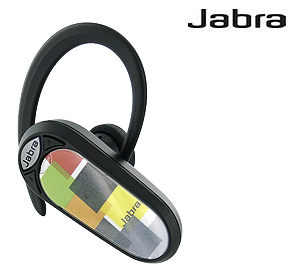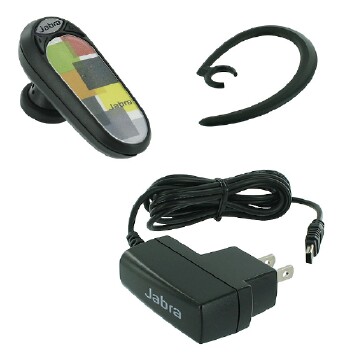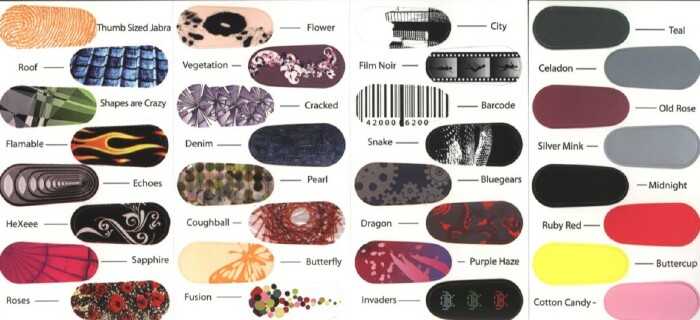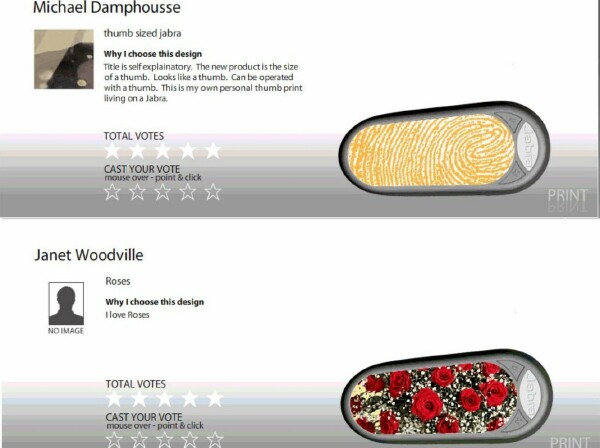
High-end headsets, and especially Jabra high-end headsets, are always a treat. But honestly, checking out what's going on in the lower end of the price spectrum can be an even more pleasant surprise. Once you get past noise cancelling and stereo support, the bulk of what most expensive headsets have going for them is the sex appeal of their industrial design. That's not a bad thing, to be sure, but it's nice to see what kind of bang for the buck is offered in the budget realm by comparison.
For the few remaining holdouts who are upgrading from a wired headset, they could do much worse than start with Jabra's entry level BT3010. Not only does it combine simplicity with respectable functionality, but it adds a welcome touch of design schmaltz that bumps things up a notch: a transparent cover for interchangeable surface designs. Let's take a closer look.
Inside the Box

Jabra has built its reputation on deluxe headsets like the JX10II (or my favorite, the BT3030, but even their budget models are pretty meat-and-potatoes. Nevertheless, at a street price of $29.95 ($49.95 MSRP), something has to give. The package includes:
- The BT3010 headset
- An earhook
- A carrying strap
- An AC power adapter and charger
- A quick start guide
- A full user manual on a mini-CD
- A sheet of 33 cover designs
The most glaring omission is the lack of car and USB chargers. The BT3010 isn't one of the models for which Jabra makes car and USB chargers as separately sold accessories, so you're stuck with the one charging method. On the other hand, car chargers alone can cost nearly as much as this headset, so the reduced versatility goes hand-in-hand with reduced pricing.
Though listed on the package, the user manual CD was another omission, at least in my box. But it's easy enough (actually more convenient) to download the PDF from Jabra's site.

The real fun is the sheet of cover designs. If you're not happy with the Mondrian-esque cover design that's already on the headset out of the box, there's bound to be at least a few designs that suit your mood and tastes.
Design and Comfort
At eight hours of talk time and up to 300 hours of standby time, the BT3010 compares favorably with many costlier headsets. As one example, the Jawbone Noise Shield that's the perennial favorite is rated at six hours of talk time, and 120 hours of standby time. It could be argued that increased battery life matters more than noise cancelling, depending on your usual environment — especially since both headsets are limited to wall chargers, making infrequent charging more desirable.
While Jabra includes a carrying strap — something I've seen few people actually use for a headset — no selection of earbud sizes is provided. Given Jabra's cost constraints, it would have seemed to make more sense to include a small and large earbud than a carrying strap. But the earphone is a little on the large side to begin with, so if you have smaller than normal ears, the BT3010 would not be my first recommendation.
The earphone fit snugly in my average-size ear with enough traction to stay put, though I didn't find it especially comfortable or uncomfortable. Being used to Jabra's high-end headsets, the BT3010 is noticeably heavier — though you probably wouldn't find the weight excessive if you're not downgrading from a premium product. If you have larger ears, or just need psychological reassurance that the piece will stay in your ear, you can use the clip-on earhook provided.
The sound quality is pretty much what you would expect of a headset in this price range. Both on outgoing calls to voice mail and incoming calls, sound is accompanied by a fine hiss. The hiss is very light, free of the trebly sibilance that many sets have, and doesn't occur between words and sounds; so for practical purposes most people will find it a non-issue. I've heard the same sound quality on headsets that are twice the price which, like this one, don't feature noise reduction or noise cancelling (though this is becoming increasingly rare).
Operation
The setup and operation of the BT3010 is more or less identical to other Jabra sets in any price range. The only small exception I encountered was in the pairing. I've used so many Jabra Bluetooth products in the last year that I can usually pair them in about 30 seconds. But it took a few tries for the Centro's Hands-free Setup to recognize this one. This is the first time I've come across a Jabra headset whose model number wasn't recognized; it pairs as "Bluetooth headset" (compared to my regular headset, which pairs as "Jabra BT3030").
Everything else is standard operating procedure. To turn the headset on or off you press and hold the answer/end button until the indicator initiates a burst of flashes. After a minute of non-operation, the indicator turns off to conserve battery. Tapping the answer/end button, naturally, answers or ends a call. Double-tapping the button redials the last number dialed. Pressing the button for about one second on an incoming call rejects the call. Pressing the volume-up and volume-down buttons simultaneously mutes the call, and pressing one of the two buttons unmutes it.
Cover Designs
Ah, now we get to the fun part. The BT3010 has a transparent plastic shield that acts as a window for any of the 33 cover designs included on a sheet. It's a simple but smart design. Since the window locks the artwork in place, there's no need for adhesive backing. Nor is it necessary for the manufacturer to commit the design to a plastic faceplate. Designs can be reproduced from any color printer if you happen to grow tired of the nearly three dozen options in the box.
This makes it a piece of cake to design your own custom cover. From the Cover Designer page on Jabra's website you can upload a picture for cropping to the headset's outline. If you're not feeling particularly creative, but patriotic, you can select your country's flag for a cover design (very cool for wearing at international sports events). Finally, you can choose from dozens of cover designs that other users have uploaded. You can even vote on each cover design.

Even if the idea of custom cover designs sounds a bit too flashy, there are plenty of unpretentious colors and patterns to choose from. The included sheet has more than its share of novelties, but it also contains eight solid colors. I prefer some of the more conservative designs: dark, muted colors with just a hint of texture that don't clash with the headset's black casing, like the Denim pattern.
Conclusion
The wide variety of cover designs offers plenty of thrills for what would otherwise be a no-frills headset. If any headset has to have at least one interesting feature to distinguish it from the competition, JabraÂ’s choice was an astute one. Between the array of included designs and the supplementary ones on the Jabra website, you're certain to find something that makes a favorable impression.
One thing that's nice about how Bluetooth headset technology has evolved in the last couple of years is the trickle-down effect of their manufacturer's R&D. Even without noise reduction or noise canceling that gets layered onto sets in higher price categories, the BT3010's sound is pretty decent. Jabra has created a headset that's simple to use while still managing to squeeze some panache into a tight budget.
|
|
| Pros |
Interchangeable covers to fit to mood for the day
Custom covers can be designed and downloaded from the Jabra website
Very inexpensive
Simple controls
|
|
| Cons |
Fine hiss accompanies inbound and outbound sound
Only one size of earbud
No car or USB chargers
Heavier than Jabra higher-end models |
|